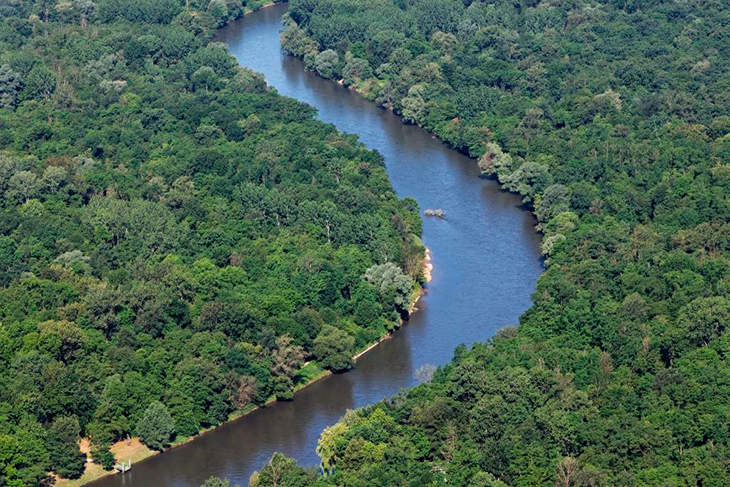The Amazon covers a large area of South America. It boasts of a variety of wildlife and is also home to hundreds of tribes. Visitors explore the rainforests to see its beauty and the locals also make sure to preserve what nature has blessed them with.
The Amazon is something to aspire to. While most countries don’t have rainforests that are that grand and majestic, they do try to create and preserve what they have. That is, until Europe was able to form its own impressive version of the Amazon.

The ‘Amazon of Europe’ is what they call it. Creating the rainforest has been a big win for nature. It took experts 12 to create this and right now, it has finally come to pass. This is now a transboundary UNESCO Biosphere Reserve covering that covers a total of nations.
Protecting the valuable and vulnerable riverine and estuarine ecosystems of the Rivers Danube, Mura, and Drava, the reserve spans across Europe and covers areas of Croatia, Serbia, Hungary, Austria, and Slovenia.
The Amazon of Europe is similar to its famous “World Heritage Sites.” This UNESCO Biosphere Reserves constitutes a high level of international protection and recognition for the very best and the finest ecosystems in the world. This is among the many that are critical to maintaining the biosphere and the worldwide web of life.
This is called the Mura-Drava-Danube Transboundary Reserve (MDD). It spans a total of 1,150 square-miles (300k ha) of pure wilderness and a total of 2,700 (700k ha) square-miles of transitionary and buffer zones.
As for the buffer zones themselves, they also house fairly unspoiled and connected microsystems such as wetlands, fish ponds, and oxbow lakes. As for the transitionary zones, these maintain an adequate human habitation. You can find villages, ecotourism businesses, and agriculture here.
“This is the most valuable connected river landscape in Central Europe and does not need to shy away from being compared with the Amazon,” explained WWF project coordinator Arno Mohl. He had pushed for the MDD for over a decade and has become quite the advocate.
The idea for this large project started in 2009. This was when Croatia and Hungary signed a joint declaration that showed their shared desire to see this kind of reserve become a reality. After which, other countries such as Serbia, Slovenia, and Austria followed suit after two short years.
In 2011, UNESCO started looking into borders and habitat that were found in each country. This was because they wanted to designate a biosphere in each one, and with the idea of combining them altogether at the end.
Europe may be a crowded continent, but the reserve is a sign that nature can maintain bastions around humans. This MDD is actually the first Biosphere Reserve that crosses and overlaps in the borders of this many nations.
“The five countries involved prove that nature conservation can overcome country borders for the benefit of everyone. In the context of the current climate crisis and massive species extinction, protecting the last natural areas has become a matter of our survival,” Mohl said.
The rainforest is home to an important body of water. It also provides shelter to a refuge for endangered species such as the black stork, otter, beavers, little tern, and sturgeon. The surrounding areas also have the highest density of European white eagles, as well as 36 species of native Slovenian fish that are found on the IUCN Red List.
In Slovenia, the River Mura is the only stretch of water that is not separated by dams. Without these barriers, the fish can migrate from its headwaters all the way to the Danube Delta. This is also where the river flows into the Black Sea.
What are your thoughts? Please comment below and share this news!
True Activist / Report a typo


